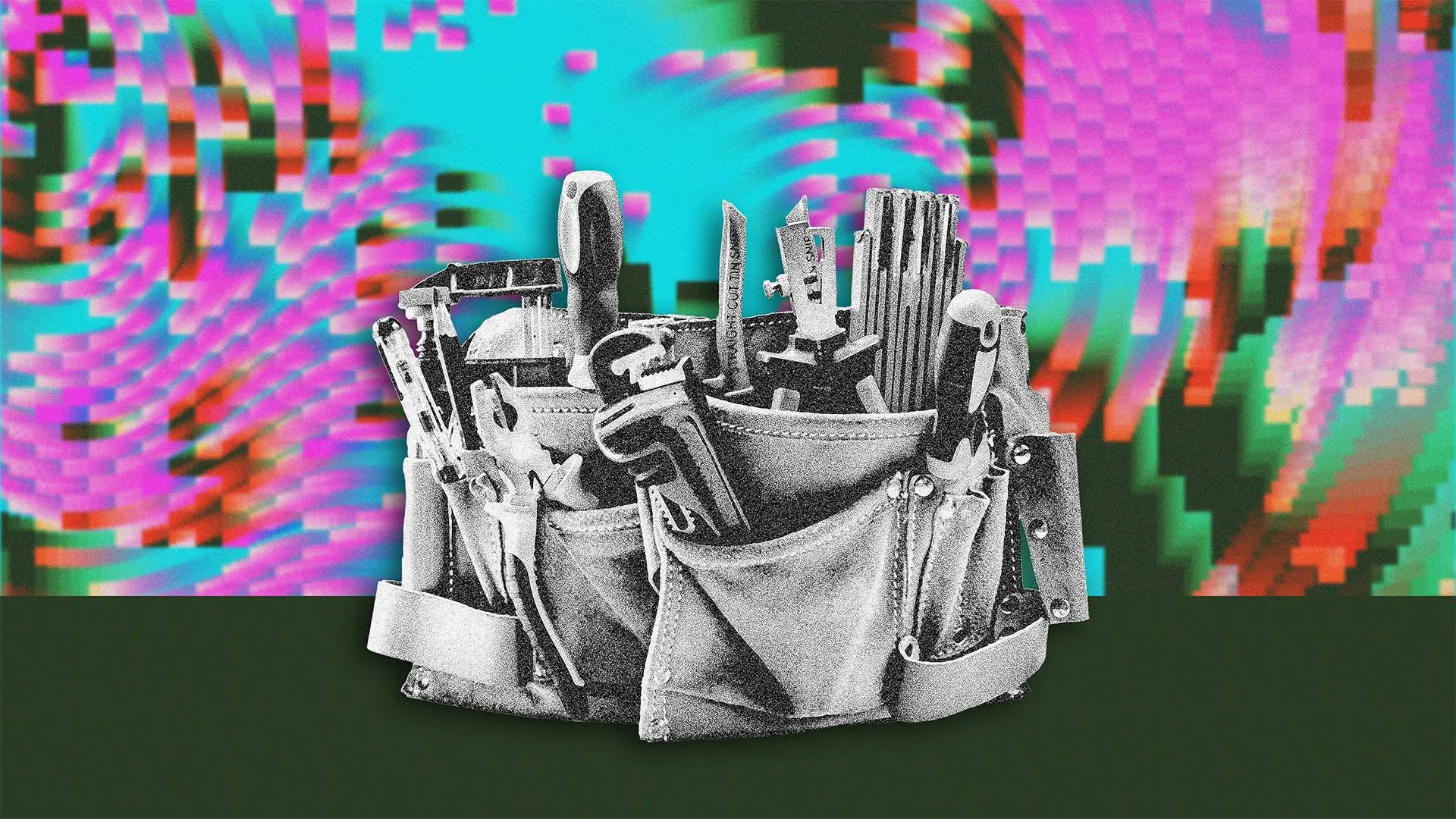Copyright Inc. Magazine

Originating in the early 2000s with 3D printing and digital fabrication, the maker movement has evolved far beyond garage workshops, demonstrating to today’s most innovative companies that breakthrough innovation requires balancing cutting-edge technology with the fundamental human need to tinker, play, and physically create. The movement’s core promise—democratizing creation—has expanded dramatically through AI. Dhruv Amin, CEO of Anything and former Google project manager who built YouTube TV into a multi-billion dollar business, processes 20,000+ software projects daily through his platform, with 91 percent created by non-engineers. “They’re realtors, teachers, and students building revenue-generating apps from their laptops,” Amin explains. AI-powered platforms now make it possible for virtually anyone to create software solutions without needing to be developers. At Zapier, for instance, teams take part in “AI hackweeks” where employees have an opportunity to experiment and build with AI tools. This allows employees to try new things and come up with practical applications. Featured Video An Inc.com Featured Presentation For instance, says Lindsay Rothlisberger, Director of Revenue Operations: “One group built an AI agent that analyzes sales call transcripts for real-time competitive positioning. Another created an automated database to help marketing find the right content assets.” But here’s the thing: Technology can be a significant driver of innovation, but as some innovation experts point out, technology alone doesn’t necessarily spur relevant breakthrough innovations. It’s the strategic balance between technology and hands-on making that can make the difference. That’s why successful companies are getting smarter than their competitors: they’re not putting all their innovation eggs in the digital basket. The Technology Trap That’s Killing Innovation Cas Holman, internationally recognized designer featured in the Netflix documentary “Abstract: The Art of Design” and consultant to Nike, Ford, and Disney, argues that over-reliance on high-tech tools is actually reducing genuine innovation in corporate environments. “Makerspaces should have scissors and exacto blades before they have a laser cutter,” Holman says. The problem is that digital tools create a false sense of completion. Teams model something in 3D software, create photorealistic renderings, and feel the work is done—without ever building anything physical. “They’ve skipped that crucial hands-on phase because the digital renderings look so convincing,” Holman explains. The result: “They miss the serendipitous discoveries that come from physical iteration—the unexpected ways materials behave, how products feel in users’ hands, or innovative applications that emerge through hands-on experimentation,” says Holman. As Holman points out, we’re less attached to specific outcomes when we’re playing or making things by hand. “When we approach things as play, there’s all kinds of room to discover things that we might not have set out to make exactly, but because we went in with an open mind, and playfully tinkered, we discover new things, and the unexpected happens,” she says. That loss of iterative insights, Holman says, has significant business implications. Businesses that rely only on technology to spur innovation miss breakthrough discoveries that can only emerge through physical prototyping. Yet there is no denying the power of advanced technology to fuel rapid change and remarkable innovation. The AI-Powered Collaboration Model At the other end of the spectrum from Holman’s focus on play and hands-on experimentation without the aid of technology, companies like Snowflake are investing heavily in technology-enabled maker spaces that prioritize collaboration and skill development. Denise Persson, Chief Marketing Officer at Snowflake, oversees the company’s Silicon Valley AI Hub, a 30,000-square-foot facility specifically designed to address critical skills gaps in AI implementation. “The big gap we’re seeing is really around skills,” Persson explains. “Companies understand what AI can do for their organization, but there’s a gap in terms of skill set—how do we actually execute on this vision with technology in our organization?” Snowflake’s approach combines co-working space for AI startups with executive education programs, creating an environment where entrepreneurs can access both technical resources and business mentorship. The physical space serves 39 founding members and 13 selected startups, with daily programming ranging from hackathons to executive-level strategy sessions. “There’s definitely magic happening when people are coming together and working together,” Persson notes. “We’re seeing big demand for the space. Before we even officially open, we’ll have at least 1,000 people who have been through the AI hub at one of our events.” These digital spaces offer an opportunity for non-technical employees to experiment with technology like AI. Clearly there’s a place for both physical and digital “making.” Strategic Innovation: The Best of Both Worlds The most successful companies are discovering that a hybrid physical and digital approach to applying the principles of the maker movement aren’t contradictory—they’re complementary. Each addresses different aspects of innovation challenges. Scott Zimmer has led the buildouts of eight innovation spaces across major financial and telecommunications companies. The former Chief Design Officer at Capital One and Chief Customer Experience Officer at Verizon, says traditional maker spaces served two purposes: permanent places that signal the value that companies place on productivity and an outlet where the creative spirit can be celebrated. They were perfect, he says, for creating prototypes that could be used in testing. For example, 3-D printing a phone that could be used to indicate to research participants that nothing being tested has been created yet, or constructing “a kiosk from panel board and duct tape so the participant will understand the point isn’t to critique the kiosk, it’s to give feedback on how the new flow makes them feel.” Today, Zimmer says, these use cases are still relevant. It’s still important for companies to innovate around a simple path: brainstorming a potential solution gathering feedback based on the cheapest/fastest prototype possible iterating toward a problem/solution fit Whether that’s called “design thinking, human-centered design, or iterative innovation,” he says, doesn’t matter. What does matter is “giving people a place that helps them change their mindsets and step into a new behavior.” In the new AI era, Zimmer says, this type of “place” is still sorely needed. “It could be physical, or virtual, but it must be a place where any type of creativity is encouraged. Creativity by using AI in different ways probably lends itself more towards hackathons than maker spaces, but perhaps the maker spaces of old would deeply benefit from some new tools: machines with dedicated access to AI solutions that can brainstorm solutions, devise clever ways to build prototypes cheaply, and even simulate customers who give feedback.” Next Steps Robert Gilbreath, a fractional C-level executive who has run internal hack days and maker-style prototyping programs, sees maker spaces as “culture engines” that keep teams focused on shipping prototypes and conducting customer tests. “A scrappy prototype plus a one-page business model gets faster buy-in than a deck,” Gilbreath observes. His practical playbook for leaders includes giving teams “a clear problem, a two-week window, and a tiny budget. Require a prototype, a user test, and a decision.” Most importantly, he advises pairing “a builder with a marketer. The best outcomes come when the person who can cut aluminum or code a demo partners with the person who can pressure-test the story.” The data supports the importance of both innovation through technology and hands-on making. For example, PwC reports that companies adopting AI in R&D can reduce time-to-market by 50 percent and lower costs by 30 percent. At the same time, hands-on maker methodologies have the potential to produce more innovative solutions while also fostering stronger team collaboration. This could take the form of a four-step approach for balancing high-tech and hands-on innovation:



